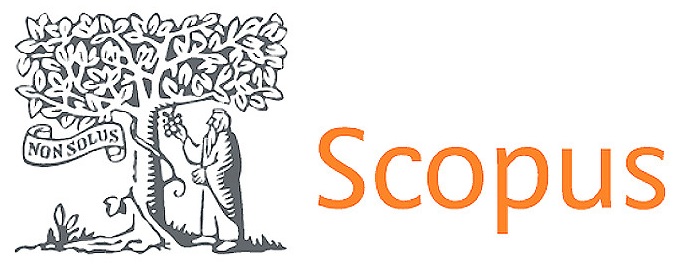Diagnostic and therapeutic challenges in a pediatric patient with anencephaly, hydrocephalus and epilepsy: Case report
DOI:
https://doi.org/10.56294/saludcyt2023359Keywords:
Anencephaly, Hydrocephalus, Epilepsy, Congenital MalformationsAbstract
Introduction: a 5-month-old female patient with an intrauterine diagnosis at 5 months of anencephaly plus hydrocephalus with a poor prognosis. Obtained by caesarean section at term. She stayed 4 days in pediatric intensive care and was then discharged. He attended due to a clinical picture characterized by a convulsive crisis at 7:00 p.m. and 8:00 p.m. She was hospitalized for 22 days presenting macrocephalus, tension hydrocephalus, external ventricular drain in place, gaze at the rising sun, spontaneous eye opening. She is under sedation and analgesia with infusion of midazolam and fentanyl, connected to mechanical ventilation through an endotracheal tube.
Case report: present a complex clinical case where the patient presents anencephaly plus hydrocephalus and epilepsy without evidence of cerebral lobes.
Conclusion: anencephaly, hydrocephalus and epilepsy are serious neurological conditions, due to the significant impact that can be present in the life of the person suffering from these medical conditions. It is extremely rare that the patient presents epilepsy and each time the episodes are more violent until the loss of consciousness
References
1. Gong T, Wu Q, Chen Y, Jiang C, Li D, Li J, et al. Changing trends in the prevalence of anencephaly in Liaoning province of Northeast China from 2006-2015: data from a population-based birth defects registry. Oncotarget. 2017; 8(32):52846–52853. https://doi.org/10.18632/oncotarget.17423
2. Pei L, Chen G, Song X, Wu J, Li C, Zou J, et al. Effect of pathoanatomic diagnosis on the quality of birth defects surveillance in China. Biomed Environ Sci. 2009; 22(6):464–71. https://doi.org/10.1016/S0895-3988(10)60003-7
3. Salari N, Fatahi B, Fatahian R, Mohammadi P, Rahmani A, Darvishi N, et al. Global prevalence of congenital anencephaly: a comprehensive systematic review and meta-analysis. Reprod Health. 2022; 19:201. https://doi.org/10.1186/s12978-022-01509-4
4. Oumer M, Kibret A, Girma A, Tazebew A, Silamsaw M. Prevalence of anencephaly in Africa: a systematic review and meta-analysis. Sci Rep. 2021; 11:23707. https://doi.org/10.1038/s41598-021-02966-w
5. Chen S, Luo J, Reis C, Manaenko A, Zhang J. (2017). Hydrocephalus after Subarachnoid Hemorrhage: Pathophysiology, Diagnosis, and Treatment. BioMed research international. 2017, 8584753. https://doi.org/10.1155/2017/8584753
6. San-Juana D, Rodríguez D. Epilepsia como una enfermedad de redes neuronales. Un punto de vista neurofisiológico. Neurología. 2020;38(2):114-123. https://doi.org/10.1016/j.nrl.2020.06.010
7. Abebe M, Afework M, Emamu B, Teshome D. Risk Factors of Anencephaly: A Case-Control Study in Dessie Town, North East Ethiopia Pediatric health, medicine and therapeutics. 2021;12:499–506. https://doi.org/10.2147/PHMT.S332561
8. González F, López R. Congenital malformations in Ecuadorian children: urgent need to create a National Registry of Birth Defects. The application of clinical genetics. 2012;3:29–39. https://doi.org/10.2147/tacg.s8794
9. Weber M, Dib M. Folic acid and prevention of neural tube closure abnormalities in treated women with epilepsy. Rev Neurol. 2003;159(2):165-170.
10. Kanya S, Charan M, Nond R, Chopiew T, Pichit S, Sumarlee S, et al. Risk factors associated with the occurrence of frontoethmoidal encephalomeningocele. Europe J Pediatric Neurol. 2008;12(2):102-107. https://doi.org/10.1016/j.ejpn.2007.07.005
11. Panduranga C, Kangle R, Suranagi V, Pilli G, Patil P. Anencephaly: A pathological study of 41 cases. Journal of the Scientific Society. 2012;39(2):81-84. https://doi.org/10.4103/0974-5009.101852
12. Abebe M, Afework M, Emamu B, Teshome D. Risk Factors of Anencephaly: A Case–Control Study in Dessie Town, North East Ethiopia. Pediatric Health Med Ther. 2021; 12:499-506. https://doi.org/10.2147/PHMT.S332561
13. Emre E, Servet G (2019) What’s Happening When the Pregnancies Are Not Terminated in Case of Anencephalic Fetuses? J Clin Med Res. 2019;11(5):332-336. https://doi.org/10.14740/jocmr3777
Published
Issue
Section
License
Copyright (c) 2023 Byron Rubén Martínez Salazar, Luis Eduardo Martínez Salazar, Jennifer Belen Mosquera Arevalo, Christian Gabriel Villa Clavijo, Lady Alexandra Tapia Quiroga (Author)

This work is licensed under a Creative Commons Attribution 4.0 International License.
The article is distributed under the Creative Commons Attribution 4.0 License. Unless otherwise stated, associated published material is distributed under the same licence.



